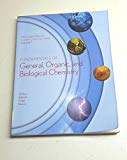
(a)
Interpretation:
The conditions that direct pyruvate towards entry into the citric acid cycle should be identified.
Concept Introduction:
Fundamental of Citric acid cycle,
- This is a series of enzyme-catalysed
chemical reactions , which is of central importance in all living cells that use oxygen as part ofcellular respiration . - This cycle initially with the transfer of a two-carbon acetyl group from acetyl-CoA (co-enzyme) to the four-carbon acceptor compound (oxaloacetate) to from a sis-carbon compound like citrate.
- The citrate than goes through a series of chemical transformation, losing two carbonyl groups as the carbon dioxide.
(b)
Interpretation:
The conditions that direct pyruvate was converted into ethanol and
Concept Introduction:
Anaerobic conditions: This process is any organisms that does not require oxygen for growth, it react negatively or even die if free oxygen is present.
This process used for industrial or domestic process to manage waste or to product fuels.
(c)
Interpretation:
The conditions that direct pyruvate was converted into lactate and in which organism (or) tissues are involved in this process, should be identified.
Concept Introduction:
It is the totally of an organism chemical reaction,
Metabolism is an emergent property of life that arises from interactions between molecules within the cell.
The pathway begins with a specific molecule and ends with product.
(d)
Interpretation:
The conditions that direct pyruvate was converted into glucose and in which organism (or) tissues are involved in this process, should be identified.
Concept Introduction:
Gluconeogenesis is the process of formation of glucose from non-carbohydrate precursors.
It is occur in all microorganism, fungi, plants and animals and the reactions are essentially the same, leading to the synthesis of one glucose molecules from two pyruvate molecules.
The process occurs only in liver and kidney, partially occurs in cytoplasm and in mitochondria.
Want to see the full answer?
Check out a sample textbook solution
Chapter 22 Solutions
Fundamentals of General, Organic and Biological Chemistry Volume 1, 5th custom edition for Spokane Community College
- Study Figure 19.18 and decide which of the following statements is false. Pyruvate dehydrogenase is inhibited by· NIADH. Pyruvate dehydrogenase is inhibited by AΤΡ. Citrate synthase is inhibited by NADH. Succinyl-CoA activates citrate synthase. Acetyl-CoA activates pyruvate carboxylase.arrow_forwardIf glutamate were labeled with C-14 at the delta-carbon and added via transamination to the citric acid cycle to produce alpha-ketoglutarate, how long would it take for the compounds containing C-14 to be reduced by 25% (assume 10 seconds per turn of the cycle)?arrow_forwardWhat is the final fate of the carbons in acetyl-CoA after several turns of the citric acid cycle?arrow_forward
- The two main goals of the citric acid cycle are: (a) citrate synthesis and gluconeogenesis (b).degradation of acetyl-CoA to produce energy and supply precursors for anabolism (c).degradation of pyruvate to produce energy and supply precursors for anabolism (d).degradation of glucose to produce energy and supply precursors for anabolism (e).degradation of pyruvate to produce energy and synthesize oxaloacetate for gluconeogenesisarrow_forwardWhat three steps are included in the breakdown of pyruvate? Explain the importance of AcetylCo A as a regulatory molecule for cellular respiration.arrow_forwardIf the conversion of glycerol to glyceraldehyde 3-phosphate releases 1 molecule of ATP, how many molecules of ATP are released during the conversion of glycerol to pyruvate?arrow_forward
- What is the cost (in ATP equivalents) of transforming glucose to pyruvate via glycolysis and back again to glucose via gluconeogenesis?arrow_forwardWhich citric acid cycle intermediates can be directly used in gluconeogenesis? Which can be used for fatty acid synthesis? Which can be directly converted to amino acids?arrow_forwardHow does the yield of ATP from complete oxidation of onemolecule of glucose in muscle and brain differ from that in liver,heart, and kidney? What is the underlying reason for this difference?arrow_forward
- What are the three common possible fates for pyruvate produced from glycolysis?arrow_forwardHow many molecules of acetyl CoA, FADH2, and NADH are produced in the catabolism of a molecule of arachidonic acid, an 20-carbon carboxylic acid? How many times does the spiral reaction sequence occurarrow_forwardDescribe the role played by each enzyme, cofactor, andcoenzyme of the pyruvate dehydrogenase complexarrow_forward
 BiochemistryBiochemistryISBN:9781305577206Author:Reginald H. Garrett, Charles M. GrishamPublisher:Cengage Learning
BiochemistryBiochemistryISBN:9781305577206Author:Reginald H. Garrett, Charles M. GrishamPublisher:Cengage Learning
